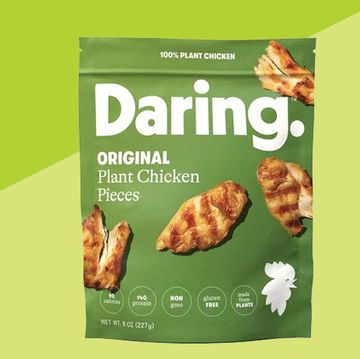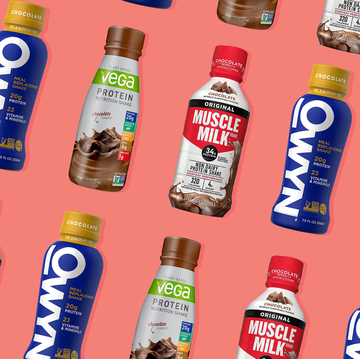- The American Heart Association just released new dietary guidelines for the first time in 15 years.
- Experts weigh in on the 10 heart-healthy tips featured in the new guidelines.
- The recommendations focus on creating approachable steps for the individual to make heart-healthy choices.
As the leading cause of death in the United States, heart disease is something that should be top of mind for everyone—whether or not you have a family history. One way to look out for the vital organ? Following a “heart-healthy diet” by eating the best foods for your heart.
But before you start scouring the internet for the latest diet trends, the American Heart Association (AHA) just updated its dietary guidelines for the first time in 15 years. We asked our experts just what these changes mean for you, and how they might affect your plate.
Why is the AHA's new guidance so important?
The guidance, published in the journal Circulation, is similar to that of the previous guidelines. But this time, the AHA has taken a new approach to encourage the general public to make heart health-conscious decisions. The report refocuses the guidelines from narrow, specific, and scientific, to broader, personalized, and more balanced to meet people where they’re at and allow for smoother lifestyle changes.
“The emphasis is on dietary patterns, not specific foods or nutrients,” Alice H. Lichtenstein, D.Sc., Gershoff Professor of Nutrition Science and Policy and director of the Cardiovascular Nutrition Laboratory at Tufts University, who led the writing committee for the statement said in the AHA news release. “And it’s not just about what people shouldn’t be eating. The focus is really on what people should be eating, so they can customize it to their personal preferences and style.”
Other health professionals are excited about the new changes and efforts made by the AHA, too. “From my perspective, this is a great change because it’s accessible and not overwhelming,” says Kristen Gradney, M.H.A., R.D.N., L.D.N., registered dietitian and president of the Capital Area American Heart Association in Baton Rouge. “It’s a great starting point and is really easy for people to understand.” She adds that as a dietitian, the new guidelines are very easy to help patients understand, and though there’s room for the average person to need some additional information, a health professional can easily help guide you.
Though it might seem like the AHA's updates are pretty run-of-the-mill, experts in the field applaud the AHA for simplifying the guidance and resurfacing them to the general public after all this time. “Nutrition and diet have the biggest impact on heart health of any sort of lifestyle factors,” says Elizabeth Klodas, M.D., cardiologist and founder of Step One Foods. Of the seven major health modifiers that contribute to heart health, five are related to diet, so changing your nutrition can have a huge impact on your risk for cardiovascular disease, she notes.
“Refocusing and bringing attention back to it is a great reminder, and these guidelines are far more actionable,” she says. “I think it’s good. I think this was very much needed to make it more actionable and practical.”
Specifically, the guidelines leave room to individualize—whether it’s calorie needs, access to food, or dining preferences, the guidelines help give overarching recommendations that most people can understand and follow.
What are the AHA's updated guidelines, exactly?
Ahead, experts break down each of the AHA's updated guidelines:
- Achieve and maintain a healthy body weight. When it comes to heart health, those who are overweight or obese can make a major impact by working toward weight loss with small dietary changes in their every day, Dr. Klodas says. But it’s important to work with your healthcare provider to determine what healthy body weight is for you individually and not focus on just ‘skinny’, Gradney adds. “That’s very individual, very specific to you. BMI is a reference, but not the end-all, be-all,” she says.
- Eat plenty and a variety of fruits and vegetables. Gradney likes that this tip is at the top of the list in a very straightforward way that everyone can understand. “Whole, unprocessed fruits, vegetables, and grains are higher in fiber and plant sterols, which are important for gut health and cholesterol management,” Dr. Klodas says. She notes that the AHA guidelines mirror those of the Mediterranean diet approach.
- Choose whole-grain foods and products. Gradney suggests that this section may need some additional clarification as to what exactly a whole-grain food is. “Having terminology like ‘brown food’ isn’t always ideal, but can be helpful,” she suggests. But in general, it’s important to choose foods that are as close as possible to the original form for maximum health benefits, Dr. Klodas says.
- Choose healthy sources of protein. The guidelines suggest using plant protein sources (like beans, nuts, and seeds) over processed meats. The AHA also recommends adding fish and seafood into your diet regularly, with low-fat or fat-free dairy products and lean cuts of meat and poultry occasionally. Dr. Klodas notes the key here isn’t how much protein is in your diet, but where it’s coming from. “Protein, in general, is not an issue for most Americans. We get plenty of protein in our diet and it’s a macronutrient that isn’t an issue,” she says. “The delivery vehicle of the protein is really what they’re emphasizing here.” This is because animal proteins tend to come with saturated fats, which can raise bad cholesterol and promote inflammation.
- Use liquid plant oils. The guidelines suggest opting for plant oils, like olive oil, rather than tropical oils (like coconut oil, hydrogenated coconut oil, and palm kernel oil) and partially hydrogenated fats. Though there are some exceptions, plant oil is liquid at room temperature and animal fat is solid at room temperature. Foods that contain tropical oils and hydrogenated oils often come from packaged and processed foods rather than naturally occurring, Dr. Klodas explains. They’re often listed as trans fats on labels, but up to 0.5 grams can be present in foods without being listed, she warns. “These should be avoided at all costs,” she says.
- Choose minimally processed foods. Instead of reaching for ultra-processed foods, the AHA suggests opting for something a bit more fresh. Foods like low-fat cookies and rice cakes are processed carbohydrates, which can increase cholesterol, Dr. Klodas warms. “If we stay away from overly processed foods, we’re really helping ourselves out with healthy biochemistry,” she says. Gradney suggests reading this tip as “choose fresh foods” for easier understanding.
- Minimize beverages and foods with added sugars. Gradney suggests cutting down on things like soda and cookies that have a lot of added sugars, versus something like fruit juice that has naturally occurring sugars. Start with small changes to cut back on sugar, Dr. Klodas says. “A can of soda a day seems like not much, but one can a day is 30 cases a year,” she says. “Changing one can of soda to a bottle of water is a health transformation.”
- Choose and prepare foods with little or no salt. “Sodium is a huge problem. It is very difficult to eat foods without a lot of salt added to them unless you cook from scratch,” Dr. Klodas says. “People think it’s the table salt that matters, but it’s the salt in the food already.” Dr. Klodas suggests keeping salt intake to under 2,300mg per day or under 1,500mg per day if you have high blood pressure. To do this, focus on foods that are naturally low-sodium or sodium-free, like fruits and vegetables. And before you go out for dinner or grab a higher-sodium meal, snack on fresh fruits or vegetables first, she suggests.
- Limit alcohol intake. Though doctors have long said moderate drinking can be good for heart health, new research points to alcohol having a negative impact on our cardiovascular health. The new guidelines suggest limiting alcohol intake and recommend not picking it up if you’re someone who already doesn’t drink. “Alcohol consumption is an issue. It’s a simple carbohydrate, empty calories, and it’s a stimulant. It can affect weight, insulin, and blood pressure control,” Dr. Klodas says.
Perhaps the biggest step the AHA took with these guidelines is allowing for the understanding that many Americans choose to dine out or have alternative sources of food other than their home kitchen. People can, and should, apply these guidelines whether they’re making dinner at home for their family from scratch, or stopping at a fast-food restaurant during their lunch break, Gradney says.
“You can make a goal to choose vegetables at a fast-food restaurant and choose salad over fries,” she says. “Start where you are, pick one or two things that you find accessible, and just do them.”

Arielle Weg is the associate editor at Prevention and loves to share her favorite wellness and nutrition obsessions. She previously managed content at The Vitamin Shoppe, and her work has also appeared in Women’s Health, Men’s Health, Cooking Light, MyRecipes, and more. You can usually find her taking an online workout class or making a mess in the kitchen, creating something delicious she found in her cookbook collection or saved on Instagram.












